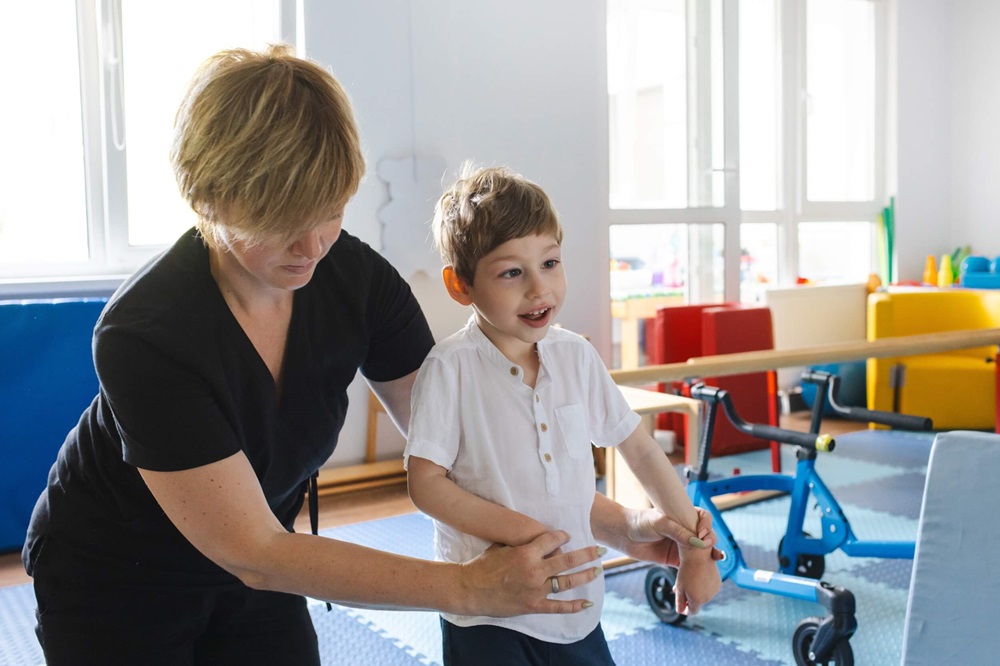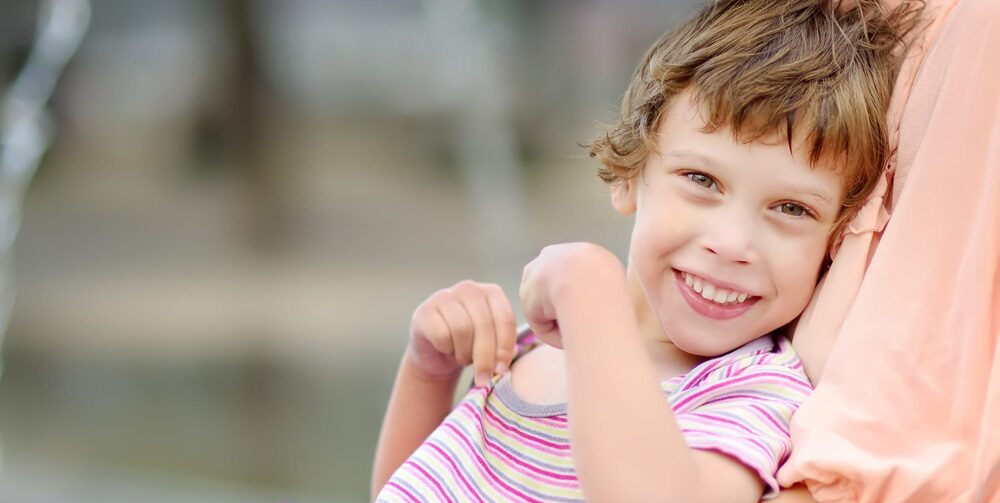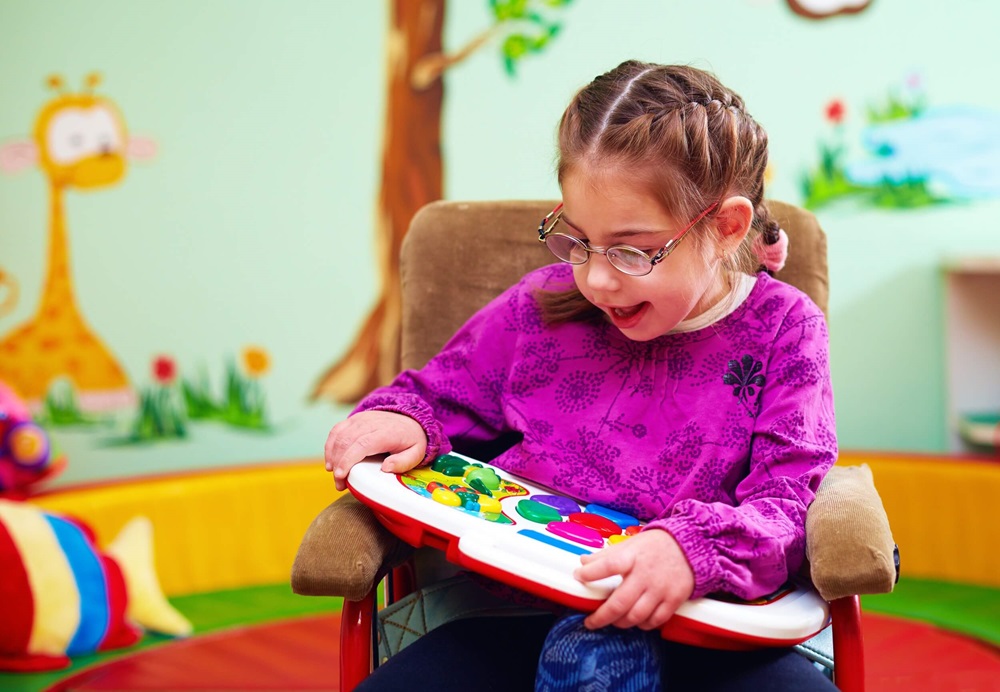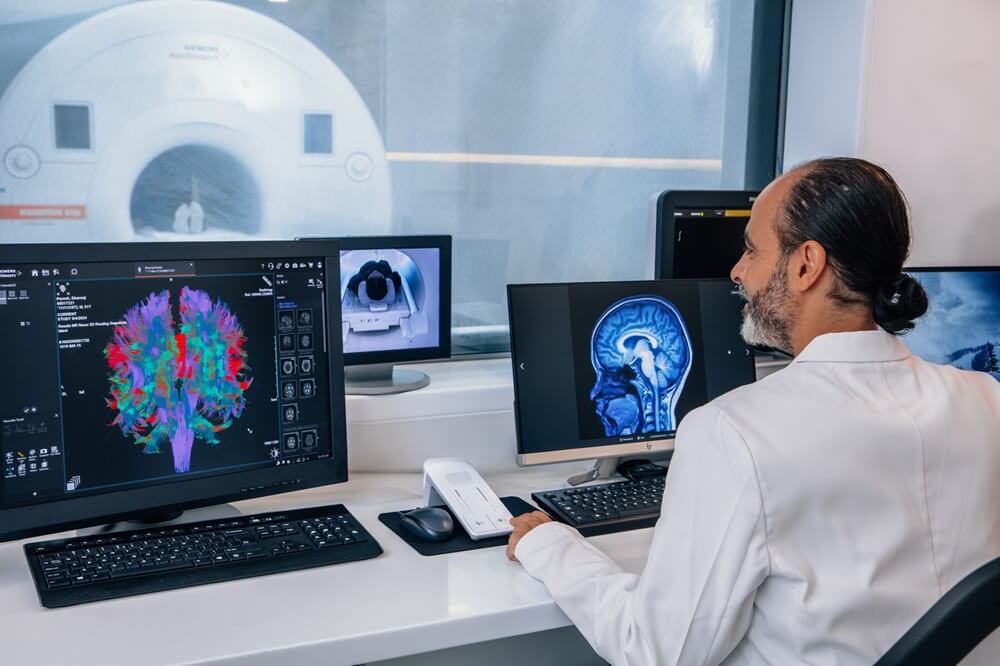
Types of Cerebral Palsy: Signs, Symptoms and Why an Early, Accurate Diagnosis Matters


Cerebral palsy (CP) is a group of non-progressive motor disorders caused by changes or injuries in the developing brain. This often manifests before or after birth (most children are diagnosed in the first 18 months of life).
While CP is lifelong, understanding the types of cerebral palsy and recognising early signs can make a profound difference in your child’s development and quality of life. Every child’s experience with CP is unique. That’s why getting an accurate diagnosis is essential.
At The Brain & Performance Centre, a DP World Company, our comprehensive assessment programmes help families understand the specific type of CP their child may have, providing clarity and guiding the next steps for care.
Our team is here to walk alongside you—as your partners, advocates and support network—committed to helping your child live a vibrant and fulfilling life.
The Main Types of Cerebral Palsy
Cerebral palsy is classified based on the type of movement disorder a child experiences. There are five primary types:
- Spastic CP: The most common type, seen in “70–80% of all [CP] cases”. Symptoms include stiffness and jerky or repeated movements.
- Ataxic CP: Less common (less than “5% of cases”). Children may have difficulties with balance, posture and muscle coordination.
- Dyskinetic CP: Seen in “10–15% of cases”. It’s characterised by abnormal patterns of movements and involuntary repeated movements.
- Choreoathetotic CP: A rare type of CP. Child shows rapid, stormy movements due to loosened muscles (hypotonia) and stiffened muscles (hypertonia)
- Mixed CP: Around “10–15% of cases” do not exhibit a single, dominant type; combined signs and symptoms appear. Mixed CP is often linked to other conditions such as sensory deficits, seizures and cognitive-perceptual impairments.

Signs and Symptoms of Cerebral Palsy Overview
Every child with cerebral palsy experiences it in their own way. Doctors classify CP into different types based on how it affects movement, but it’s important to remember these categories are simply tools to guide care and support.
Knowing the type can help families better understand their child’s needs, but it doesn’t define their child’s potential.
| Type of CP | Primary Symptoms | Common Signs in Children |
| Spastic CP (most common) | Muscle stiffness, tightness | Spasms and difficulty with movement |
| Dyskinetic CP | Muscle stiffness or tightness, overactive facial muscles and tongue | Twisted/abrupt movements, facial grimacing, trouble speaking |
| Ataxic CP | Poor balance and coordination | Wide-based gait, tremors, difficulty with fine motor tasks (e.g., writing) |
| Choreoathetotic CP | Rapid, stormy movements, changes in muscle tone | Fluctuating movements that may look exaggerated or hard to control |
| Mixed CP | Combination of above types | May show both stiffness and involuntary movements |
What Early Cerebral Palsy Signs Should Parents Look for in Babies or Toddlers?
While there are many different types and levels of disability, most children with CP have underlying brain injury or abnormal brain development that occurs before, during, or shortly after birth.
In some cases, complications around the time of delivery, such as reduced oxygen supply (hypoxia) or restricted blood flow (ischaemia), can contribute.
Other important factors include intrauterine infections, maternal health conditions, prematurity, low birth weight, brain malformations, and neonatal complications (e.g., severe jaundice, sepsis, or stroke).
The first presenting signs may include:
- Delays in reaching motor or movement milestones such as “rolling over, sitting, standing, or walking”
- Muscles that are unusually “floppy” or “stiff” in babies younger than 6 months of age
- Inability to bring their “hands together” or “to their mouth” in babies over 6 months of age
- Crawling in a “lopsided manner” and scooting on their buttocks or hopping on their knees (rather than crawling) in babies over 10 months of age.
Please note, some children without CP may exhibit these signs. This is why early assessment is key.
The sooner a child receives a precise diagnosis, the sooner families can understand the most suitable strategies and interventions to support their loved one’s development.
Detecting signs early does not guarantee a diagnosis, but it ensures that children receive careful monitoring and expert guidance.

Why Accurate Diagnosis Matters
At The Brain & Performance Centre, our focus is on helping families understand exactly what type of CP their child may have. An accurate diagnosis empowers families to:
- Make informed decisions about therapies and interventions.
- Avoid unnecessary treatments.
- Track developmental progress with confidence.
- Understand their child’s unique abilities and challenges.
Our approach includes advanced neurological testing and imaging to identify which areas of the brain are affected. Detailed assessments of motor skills, posture and coordination allow our team to provide families with clear guidance about what to expect and which next steps are most relevant.

Supporting Families Through the Diagnosis Journey
We understand that navigating a possible diagnosis of cerebral palsy can feel overwhelming. The Brain & Performance Centre’s Cerebral Palsy Programme guides families with compassion and clarity through every step.
Our physicians and specialists explain findings in simple, understandable terms and work closely with parents to create a personalised roadmap forward.
Using innovative technology, we pinpoint the areas of the brain most affected and identify the type of CP with precision. This level of insight is not about placing labels—it’s about giving families clarity, reassurance and confidence in their child’s next steps.
From there, we design a holistic and multidisciplinary plan tailored to each child’s needs. Depending on the assessment findings, this may include:
- The world’s most advanced hyperbaric oxygen therapy (HBOT) using a hyperoxic-hypoxic paradox approach
- Specialized physiotherapy by our expert CP therapists to improve motor functions and more
- Cognitive and physical training to strengthen both mind and body
- Occupational and speech therapy to improve independence and communication
- Diet optimisation that supports healthy nutrition and overall well-being
- Gait analysis to ensure precise rehabilitation and optimal outcomes
Most importantly, we emphasise hope for improvement—even for families who may have tried other therapies without success.
With the right guidance and support, children can make meaningful progress, and parents gain the peace of mind that their child’s future holds possibilities.

